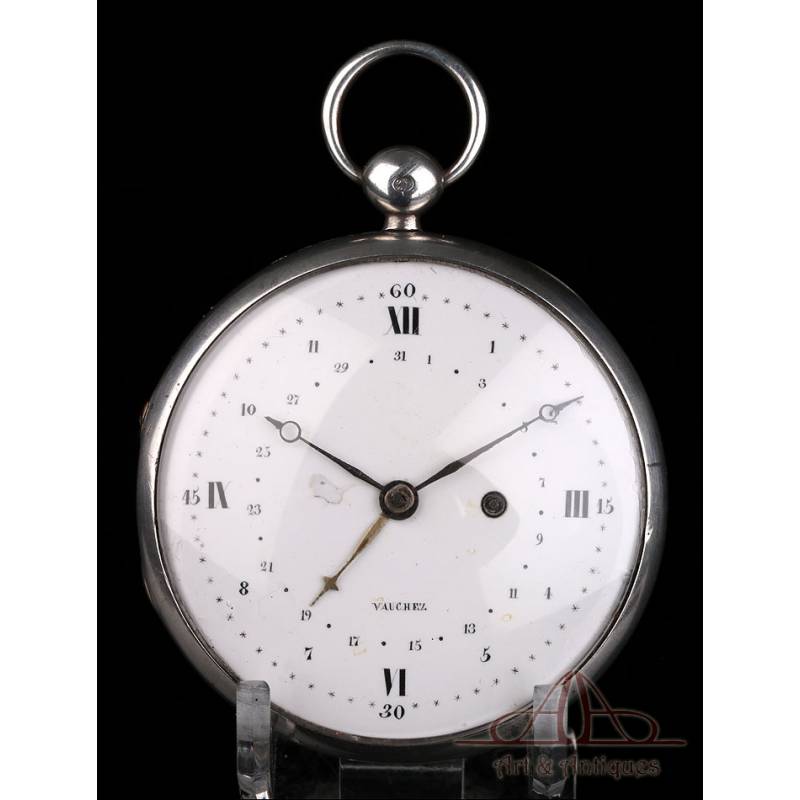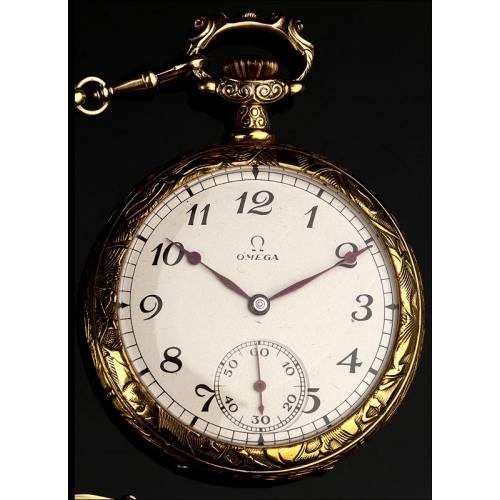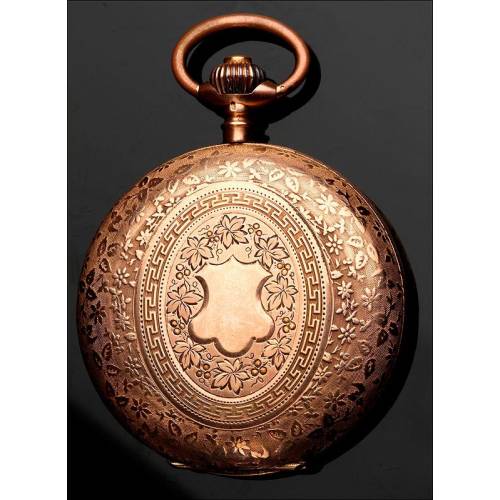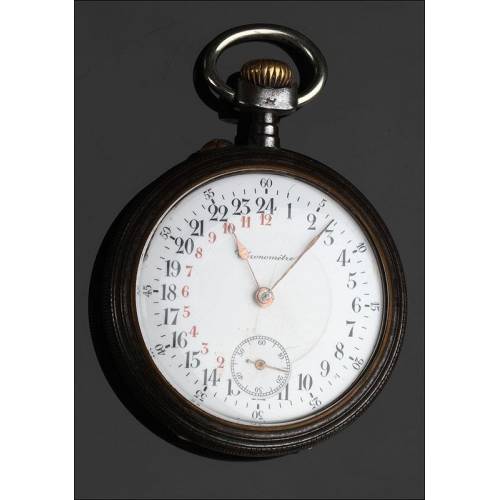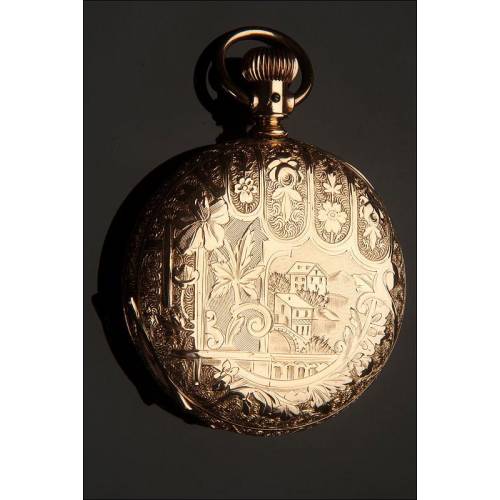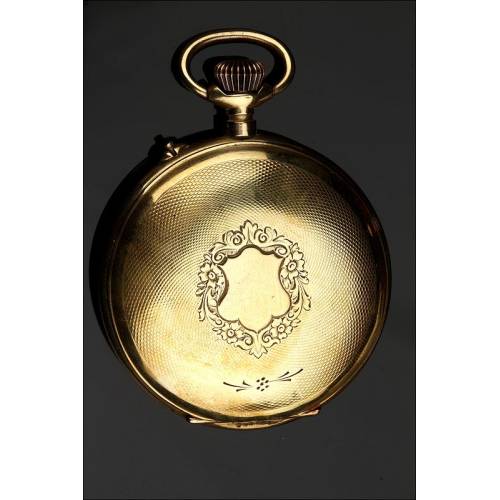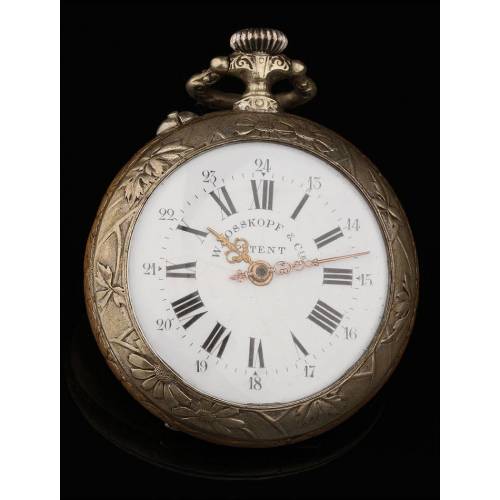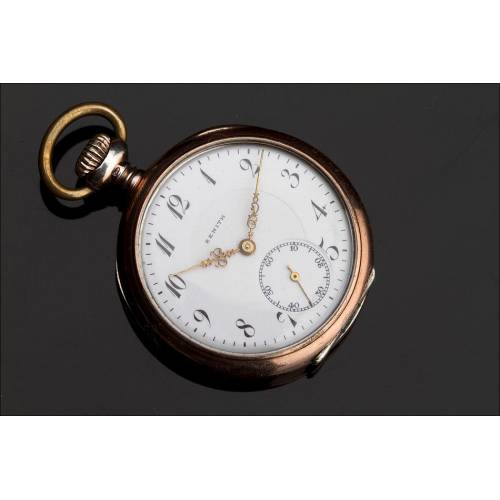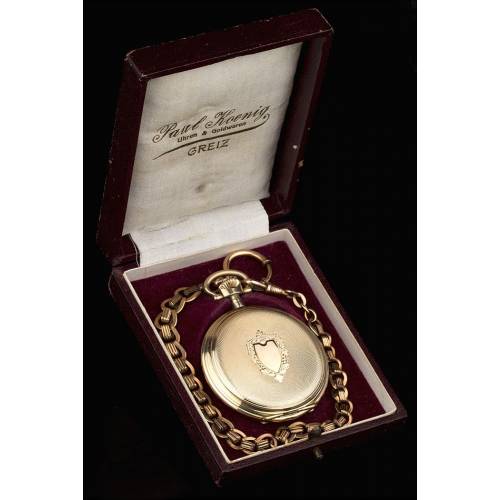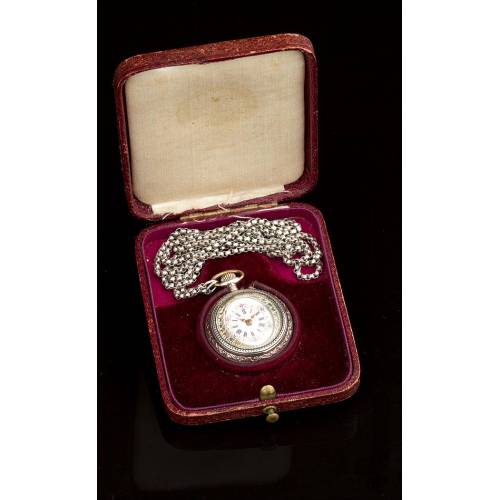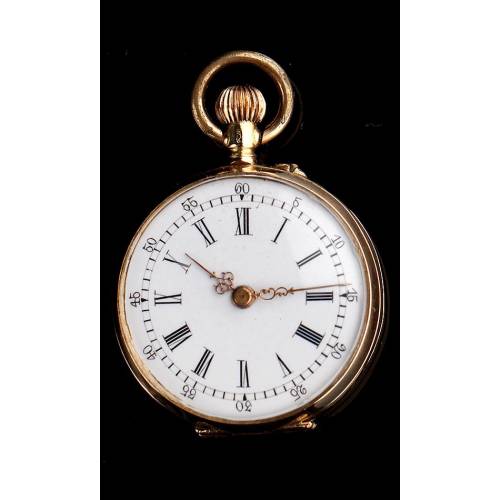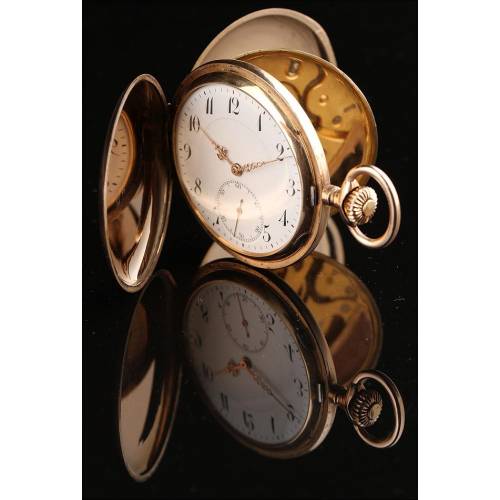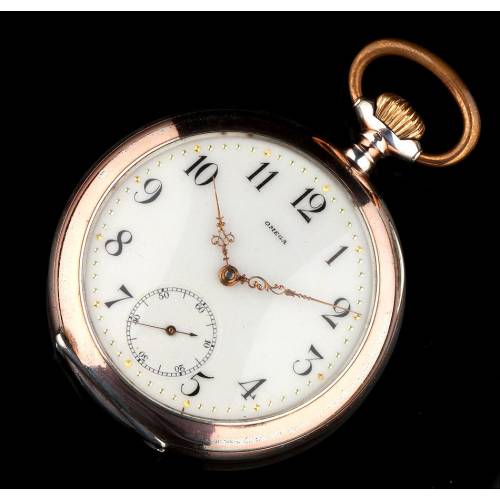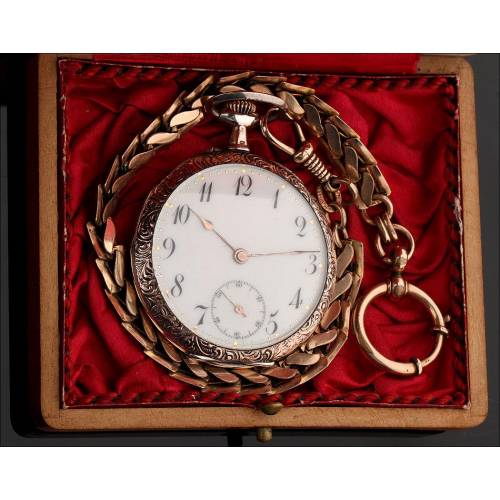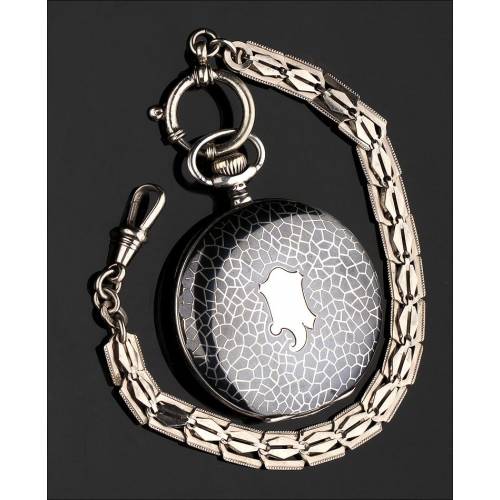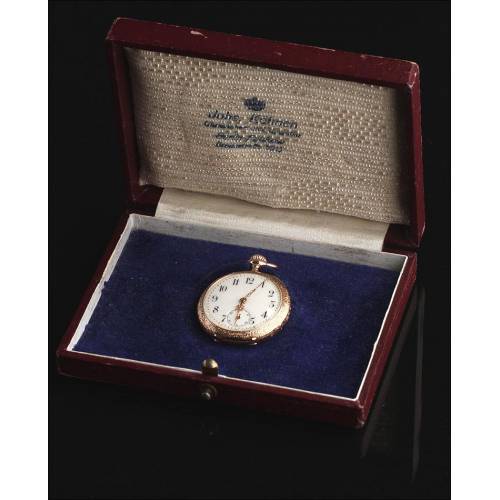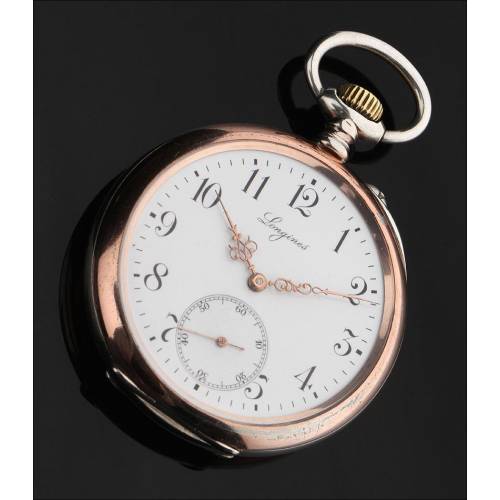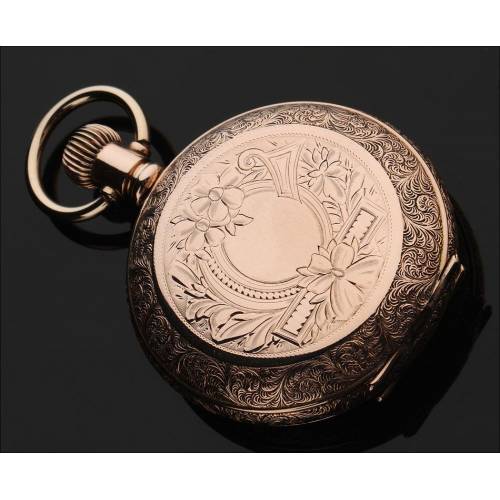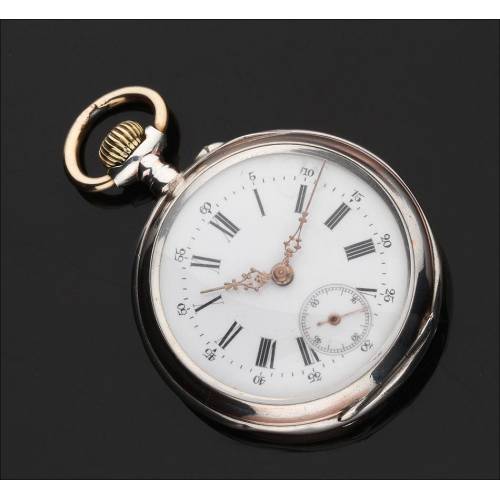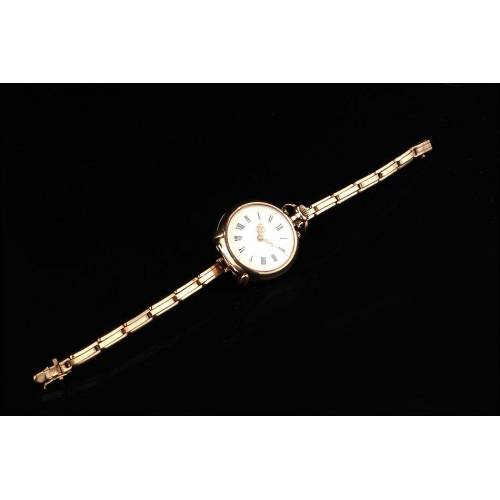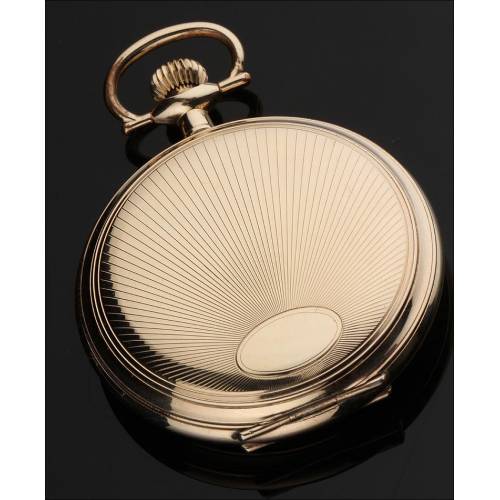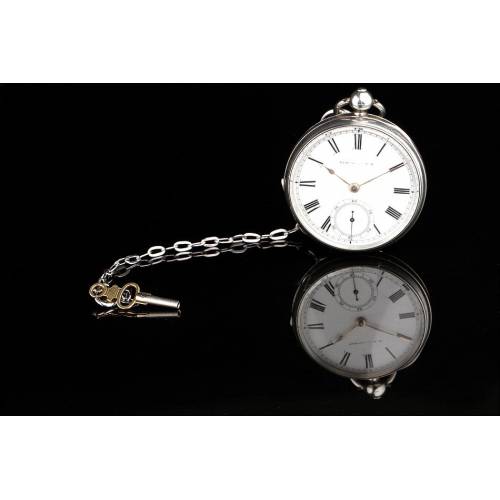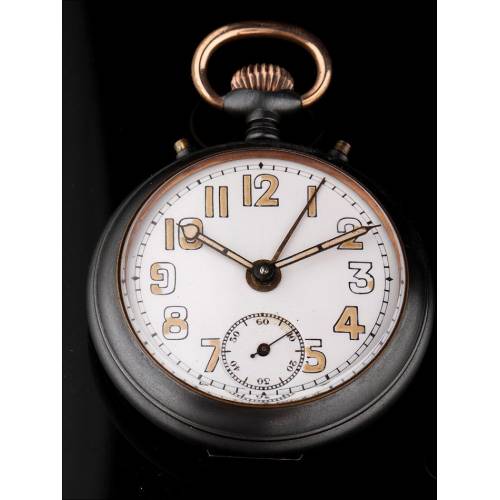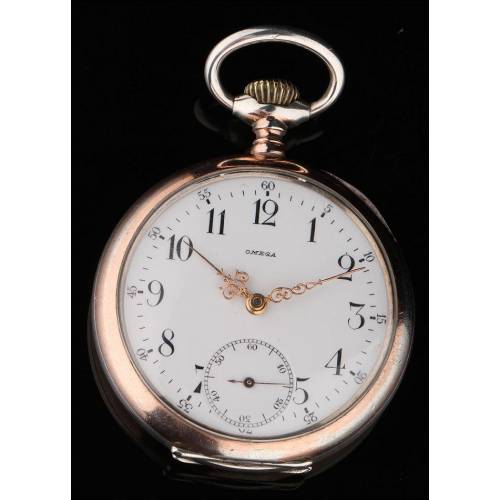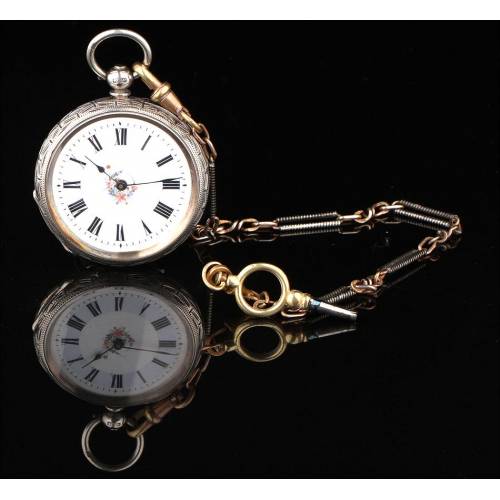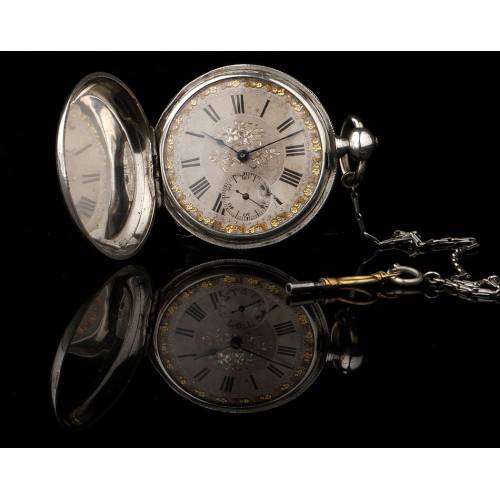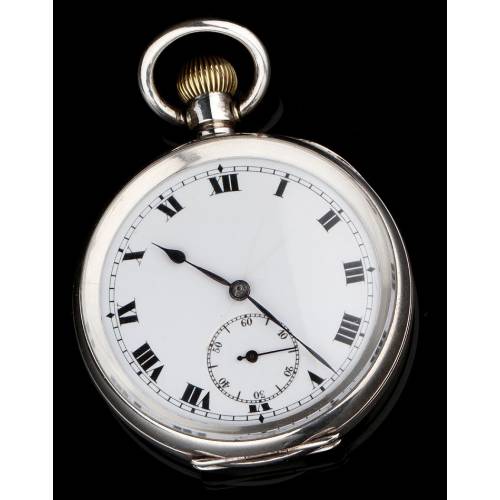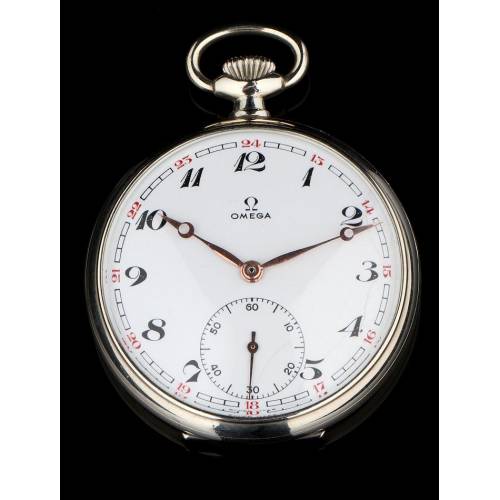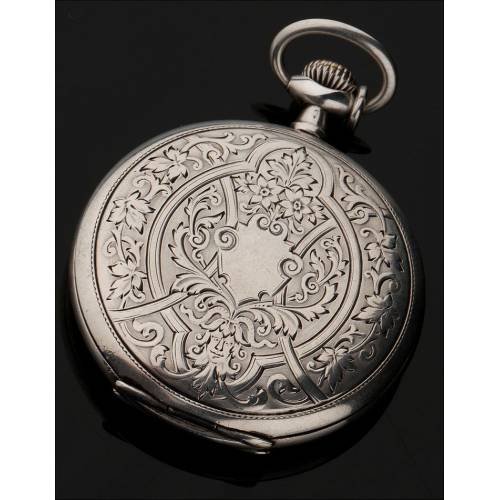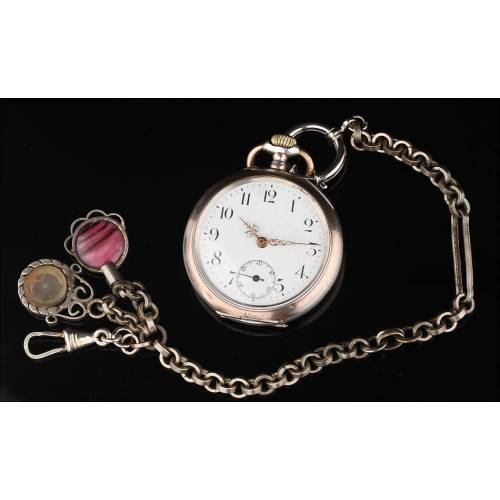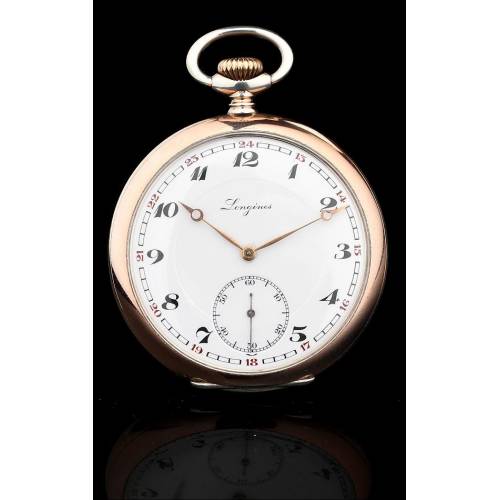D-322
Antique Ultra Slim Vauchez Silver Pocket Watch with Calendar. France, 1800-1810
Elegant ultra slim silver pocket watch witn calendar. In very good condition. Signed by Vauchez.
Sold!
Antique ultra slim silver pocket watch with calendar, made by Vauchez (Vauchez en la Cité A Paris) in France between 1800 and 1810 and in very good condition and working order. This is a gorgeous model with a very rare ultra slim movement. The watch has a full silver ball pendant and round bow placed at the twelve-position relative to the dial, with hinge at the nine position. The outer case is engine turned in a circular guilloche pattern. There is a French Hall mark of a crab on the ball pendant, indicating a silver content of 0.950. At the interior of the back cover we can see a case number, and perhaps another small hallmark (illegible). The cover is hinged to the movement and falls free from it when desired. The watch mounts round white dial with bold enameled Roman hours at the quarters and small Arabic hours at the balance there are individual stars for the minute markers and large Arabic numerals at the four fifteen minute markers. To the inside of the hour chapter there is an Arabic calendar ring, with the odd numeral days so marked and the even numbered days of the month indicated by black dots. The dial mounts antique Breguet hands and gilt metal Fuchsia hand for the calendar. There is a single winding aperture in line with the 15-minute marker. The dial is signed above the six, Vauchez. The movement shows off a really interesting design. The use of the verge/chain fusee has been replaced by a going barrel, which allows for the slimness of this watch. There is a charming scythe-shaped brass balance bridge, from which the Swiss-style index regulator emerges. We can see the readings (R&A) engraved on a small shaped plate. This is likely a cylinder escapement with monometallic balance, three arms and flat balance spring. The plate is signed Vauchez en la Cite a Paris, NO. 1650. This arrangement is partially based upon the early findings of Jean Antoine Lepine, who in 1772 introduced the thin watch. He did away with the chain driven fusee and replaced it with a going barrel, which has a wheel with teeth that interacts directly with the first pinion of the train wheel. Abraham Louis breguet then took that concept further and invented variations on this theme, e.g., the use of a split going barrel or the use of 2-4 going barrels. In their day, these watches were truly innovative. Today, Vauchez watches are true collector's items. Dimensions: 58 mm.Vauchez - History Born in Fleurier in 1716, Vaucher leaves his hometown for Paris in 1760 where, as of 1767, he was active as master watchmaker located in Rue du Pré-aux-Bufs. His timepieces signed "Vauchez en la Cité" became quickly popular amongst wealthy aristocrats. He most probably worked with the celebrated Ferdinand Berthoud and other expatriates of his home region, as well as with his sons Jonas-Frédéric, Jean-Henri- David, François, Jean-Jacques and Samuel who had followed him to Paris. His oldest daughter Isabelle-Salomé also works as a watchmaker.

